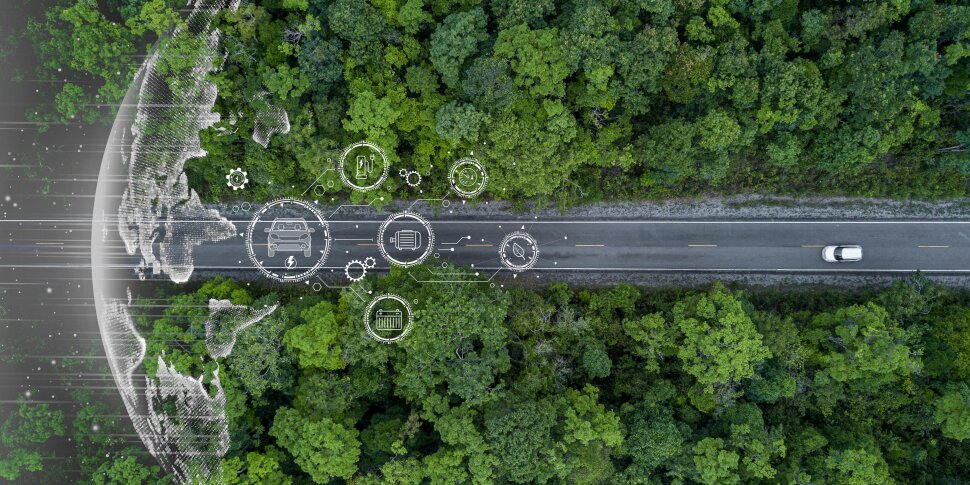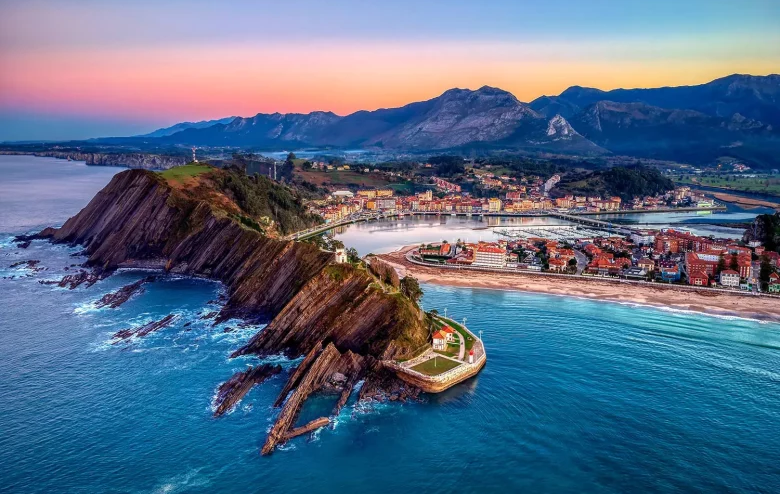Ecotourism Choice Drivers: Role of Green Marketing, Green Innovation, and Receptivity to Green Communication
Downloads
Downloads
[1] Wallace, G. N., & Pierce, S. M. (1996). An evaluation of ecotourism in Amazonas, Brazil. Annals of Tourism Research, 23(4), 843–873. doi:10.1016/0160-7383(96)00009-6.
[2] Donohoe, H. M., & Needham, R. D. (2006). Ecotourism: The evolving contemporary definition. Journal of Ecotourism, 5(3), 192–210. doi:10.2167/joe152.0.
[3] Thompson, B. S. (2022). Ecotourism anywhere? The lure of ecotourism and the need to scrutinize the potential competitiveness of ecotourism developments. Tourism Management, 92, 104568. doi:10.1016/j.tourman.2022.104568.
[4] The Business Research Company. (2024). Ecotourism Global Market Report 2024. The Business Research Company, Hyderabad, India Available online: https://www.thebusinessresearchcompany.com/report/ ecotourism-global-market-report (accessed on August 2025).
[5] La Manna, G., Melis, G., Rako-Gospić, N., Basta, J., Mackelworth, P., Holcer, D., Atzeni, M., & Leeb, K. (2020). Sustainable dolphin watching tours as a tool to increase public awareness of marine conservation–a comparative analysis between two Mediterranean destinations and implications for management. Journal of Ecotourism, 19(4), 345–361. doi:10.1080/14724049.2020.1742132.
[6] Lopez Gutierrez, B., Almeyda Zambrano, A. M., Mulder, G., Ols, C., Dirzo, R., Almeyda Zambrano, S. L., Quispe Gil, C. A., Cruz Díaz, J. C., Alvarez, D., Valdelomar Leon, V., Villareal, E., Sanchez Espinosa, A., Quiros, A., Stein, T. V., Lewis, K., & Broadbent, E. N. (2020). Ecotourism: the ‘human shield’ for wildlife conservation in the Osa Peninsula, Costa Rica. Journal of Ecotourism, 19(3), 197–216. doi:10.1080/14724049.2019.1686006.
[7] Morse, B. A. B., Carman, J. P., & Zint, M. T. (2019). Fostering environmental behaviors through observational learning. Journal of Sustainable Tourism, 27(10), 1530–1552. doi:10.1080/09669582.2019.1647219.
[8] Lee, T. H., & Jan, F. H. (2018). Ecotourism Behavior of Nature-Based Tourists: An Integrative Framework. Journal of Travel Research, 57(6), 792–810. doi:10.1177/0047287517717350.
[9] Thi Khanh, C. N., & Phong, L. T. (2020). Impact of environmental belief and nature-based destination image on ecotourism attitude. Journal of Hospitality and Tourism Insights, 3(4), 489–505. doi:10.1108/JHTI-03-2020-0027.
[10] Huang, Y. C., & Liu, C. H. S. (2017). Moderating and mediating roles of environmental concern and ecotourism experience for revisit intention. International Journal of Contemporary Hospitality Management, 29(7), 1854–1872. doi:10.1108/IJCHM-12-2015-0677.
[11] Pham, H. S. T., & Khanh, C. N. T. (2021). Ecotourism intention: the roles of environmental concern, time perspective and destination image. Tourism Review, 76(5), 1141–1153. doi:10.1108/TR-09-2019-0363.
[12] Hultman, M., Kazeminia, A., & Ghasemi, V. (2015). Intention to visit and willingness to pay premium for ecotourism: THE impact of attitude, materialism, and motivation. Journal of Business Research, 68(9), 1854–1861. doi:10.1016/j.jbusres.2015.01.013.
[13] Zhang, H., & Lei, S. L. (2012). A structural model of residents’ intention to participate in ecotourism: The case of a wetland community. Tourism Management, 33(4), 916–925. doi:10.1016/j.tourman.2011.09.012.
[14] Lu, A. C. C., Gursoy, D., & Del Chiappa, G. (2016). The Influence of Materialism on Ecotourism Attitudes and Behaviors. Journal of Travel Research, 55(2), 176–189. doi:10.1177/0047287514541005.
[15] Tilikidou, I., & Delistavrou, A. (2015). Preferring green and rejecting “unethical” hotels. EuroMed Journal of Business, 10(3), 285–296. doi:10.1108/EMJB-09-2014-0026.
[16] Leonidou, C. N., Katsikeas, C. S., & Morgan, N. A. (2013). “Greening” the marketing mix: Do firms do it and does it pay off? Journal of the Academy of Marketing Science, 41(2), 151–170. doi:10.1007/s11747-012-0317-2.
[17] Kumar Kar, S., & Harichandan, S. (2022). Green marketing innovation and sustainable consumption: A bibliometric analysis. Journal of Cleaner Production, 361, 132290. doi:10.1016/j.jclepro.2022.132290.
[18] Chin, C. H., Chin, C. L., & Wong, W. P. M. (2018). The Implementation of Green Marketing Tools in Rural Tourism: The Readiness of Tourists? Journal of Hospitality Marketing and Management, 27(3), 261–280. doi:10.1080/19368623.2017.1359723.
[19] Hou, H., & Wu, H. (2021). Tourists’ perceptions of green building design and their intention of staying in green hotel. Tourism and Hospitality Research, 21(1), 115–128. doi:10.1177/1467358420963379.
[20] Asadi, S., OmSalameh Pourhashemi, S., Nilashi, M., Abdullah, R., Samad, S., Yadegaridehkordi, E., Aljojo, N., & Razali, N. S. (2020). Investigating influence of green innovation on sustainability performance: A case on Malaysian hotel industry. Journal of Cleaner Production, 258, 120860. doi:10.1016/j.jclepro.2020.120860.
[21] Eddyono, F., Darusman, D., Sumarwan, U., & Sunarminto, T. (2025). Optimization model: the innovation and future of e-ecotourism for sustainability. Journal of Tourism Futures, 11(1), 96–113. doi:10.1108/JTF-03-2021-0067.
[22] Nguyen, T. H. H., Pilík, M., & Pham, N. T. (2025). Firms’ green knowledge sharing and tourists’ green electronic word-of-mouth intention: a two-wave time-lagged study of moderated mediation model. Journal of Sustainable Tourism, 33(3), 416–435. doi:10.1080/09669582.2024.2346791.
[23] Burchell, K., Rettie, R., & Patel, K. (2013). Marketing social norms: Social marketing and the “social norm approach.” Journal of Consumer Behaviour, 12(1), 1–9. doi:10.1002/cb.1395.
[24] Juvan, E., & Dolnicar, S. (2014). The attitude-behaviour gap in sustainable tourism. Annals of Tourism Research, 48, 76–95. doi:10.1016/j.annals.2014.05.012.
[25] Cheng, Y. H., Chang, K. C., Cheng, Y. S., & Hsiao, C. J. (2022). How Green Marketing Influences Customers’ Green Behavioral Intentions in the Context of Hot-Spring Hotels. Journal of Tourism and Services, 13(24), 190–207. doi:10.29036/jots.v13i24.352.
[26] Tewari, A., Mathur, S., Srivastava, S., & Gangwar, D. (2022). Examining the role of receptivity to green communication, altruism and openness to change on young consumers’ intention to purchase green apparel: A multi-analytical approach. Journal of Retailing and Consumer Services, 66, 102938. doi:10.1016/j.jretconser.2022.102938.
[27] Latip, M. S. A., Tumin, S. A., & May, R. Y. Y. (2023). Antecedents of Organic Food Purchase Intention: Does It Moderate By the Receptivity To Green Communication? Journal of Sustainability Science and Management, 18(6), 41–57. doi:10.46754/jssm.2023.06.004.
[28] Assaker, G. (2020). The effects of hotel green business practices on consumers’ loyalty intentions: an expanded multidimensional service model in the upscale segment. International Journal of Contemporary Hospitality Management, 13(12), 3787–3807. doi:10.1108/IJCHM-05-2020-0461.
[29] Nguyen-Van, H., Nguyen, L. D., Le, A. H., Nguyen, H. T. M., & Nam Dang, Q. (2024). Values and perceptions of customers on behavioral intentions in hard adventure tourism in the Mountain and rural areas: a comparison between Asian and Western tourists. Cogent Business and Management, 11(1), 2401176. doi:10.1080/23311975.2024.2401176.
[30] Ru, X., Wang, S., Chen, Q., & Yan, S. (2018). Exploring the interaction effects of norms and attitudes on green travel intention: An empirical study in eastern China. Journal of Cleaner Production, 197, 1317–1327. doi:10.1016/j.jclepro.2018.06.293.
[31] Bagozzi, R. P., Lee, K. H., & Van Loo, M. F. (2001). Decisions to donate bone marrow: The role of attitudes and subjective norms across cultures. Psychology and Health, 16(1), 29–56. doi:10.1080/08870440108405488.
[32] The GEF. (2024). Supporting nature-based tourism in Viet Nam for wide benefit. Available online: https://www.thegef.org/newsroom/feature-stories/supporting-nature-based-tourism-viet-nam-wide-benefit (accessed on June 2025).
[33] McNall, S. G., Dang, L. Q., & Sobieszczyk, T. (2016). Ecotourism in Costa Rica and Vietnam: Is It Sustainable? Sustainability (United States), 9(3), 144–154. doi:10.1089/SUS.2016.29058.sgm.
[34] Martínez, P. (2015). Customer loyalty: Exploring its antecedents from a green marketing perspective. International Journal of Contemporary Hospitality Management, 27(5), 896–917. doi:10.1108/IJCHM-03-2014-0115.
[35] Moise, M. S., Gil-Saura, I., & Ruiz-Molina, M. E. (2021). “Green” practices as antecedents of functional value, guest satisfaction and loyalty. Journal of Hospitality and Tourism Insights, 4(5), 722–738. doi:10.1108/JHTI-07-2020-0130.
[36] Polonsky, M. J. (1994). Green Marketing Regulation in USA and Australia: The Australian Checklist. Greener Management International, 5(5), 44–52.
[37] Chan, E. S. wa. (2014). Green Marketing: Hotel Customers’ Perspective. Journal of Travel and Tourism Marketing, 31(8), 915–936. doi:10.1080/10548408.2014.892465.
[38] Dangelico, R. M., & Vocalelli, D. (2017). “Green Marketing”: An analysis of definitions, strategy steps, and tools through a systematic review of the literature. Journal of Cleaner Production, 165, 1263–1279. doi:10.1016/j.jclepro.2017.07.184.
[39] Nuryakin, N., & Maryati, T. (2022). Do green innovation and green competitive advantage mediate the effect of green marketing orientation on SMEs’ green marketing performance? Cogent Business and Management, 9(1), 2065948. doi:10.1080/23311975.2022.2065948.
[40] Chahal, H., Dangwal, R., & Raina, S. (2014). Antecedents and consequences of strategic green marketing orientation. Journal of Global Responsibility, 5(2), 338–362. doi:10.1108/JGR-09-2013-0012.
[41] Chan, E. S. W. (2013). Managing green marketing: Hong Kong hotel managers’ perspective. International Journal of Hospitality Management, 34(1), 442–461. doi:10.1016/j.ijhm.2012.12.007.
[42] Sahioun, A., Bataineh, A. Q., Abu-AlSondos, I. A., & Haddad, H. (2023). The impact of green marketing on consumers’ attitudes: A moderating role of green product awareness. Innovative Marketing, 19(3), 237–253. doi:10.21511/im.19(3).2023.20.
[43] Yoon, D., Kim, Y. K., & Fu, R. J. C. (2020). How can hotels’ green advertising be persuasive to consumers? An information processing perspective. Journal of Hospitality and Tourism Management, 45, 511–519. doi:10.1016/j.jhtm.2020.10.014.
[44] Zhu, Q., & Sarkis, J. (2016). Green marketing and consumerism as social change in China: Analyzing the literature. International Journal of Production Economics, 181, 289–302. doi:10.1016/j.ijpe.2016.06.006.
[45] Sarkar, A. N. (2012). Green Branding and Eco-innovations for Evolving a Sustainable Green Marketing Strategy. Asia-Pacific Journal of Management Research and Innovation, 8(1), 39–58. doi:10.1177/2319510x1200800106.
[46] Khalid, A. (2023). Sustainable Marketing and its Impact on Society: A Study of Marketing Strategies and Opportunities Promoting Eco-Friendly Lifestyle. SSRN Electronic Journal, 1-8. doi:10.2139/ssrn.4570227.
[47] Satta, G., Spinelli, R., & Parola, F. (2019). Is tourism going green? A literature review on green innovation for sustainable tourism. Tourism Analysis, 24(3), 265–280. doi:10.3727/108354219X15511864843803.
[48] Li, D., Zhao, Y., Zhang, L., Chen, X., & Cao, C. (2018). Impact of quality management on green innovation. Journal of Cleaner Production, 170, 462–470. doi:10.1016/j.jclepro.2017.09.158.
[49] Wong, S. K. S. (2012). The influence of green product competitiveness on the success of green product innovation: Empirical evidence from the Chinese electrical and electronics industry. European Journal of Innovation Management, 15(4), 468–490. doi:10.1108/14601061211272385.
[50] Elizabeth, C., & Tafadzwa, C. (2020). The influence of green image, physical environment quality and green trust on green purchase intention. The Retail and Marketing Review, 15(1), 13–26.
[51] Moslehpour, M., Chau, K. Y., Du, L., Qiu, R., Lin, C. Y., & Batbayar, B. (2023). Predictors of green purchase intention toward eco-innovation and green products: Evidence from Taiwan. Economic Research, 36(2), 2121934. doi:10.1080/1331677X.2022.2121934.
[52] Ajzen, I., & Madden, T. J. (1986). Prediction of goal-directed behavior: Attitudes, intentions, and perceived behavioral control. Journal of Experimental Social Psychology, 22(5), 453–474. doi:10.1016/0022-1031(86)90045-4.
[53] Wan, C., Shen, G. Q., & Choi, S. (2017). Experiential and instrumental attitudes: Interaction effect of attitude and subjective norm on recycling intention. Journal of Environmental Psychology, 50, 69–79. doi:10.1016/j.jenvp.2017.02.006.
[54] Leonidou, L. C., Coudounaris, D. N., Kvasova, O., & Christodoulides, P. (2015). Drivers and Outcomes of Green Tourist Attitudes and Behavior: Sociodemographic Moderating Effects. Psychology and Marketing, 32(6), 635–650. doi:10.1002/mar.20806.
[55] Cialdini, R. B., & Trost, M. R. (1998). Social influence: Social norms, conformity and compliance. The handbook of social psychology. McGraw-Hill, Ohio, United States.
[56] Wattanacharoensil, W., Fakfare, P., Manosuthi, N., Lee, J. S., Chi, X., & Heesup Han. (2024). Determinants of traveler intention toward animal ethics in tourism: Developing a causal recipe combining cognition, affect, and norm factors. Tourism Management, 100, 104823. doi:10.1016/j.tourman.2023.104823.
[57] Cialdini, R. B., Reno, R. R., & Kallgren, C. A. (1990). A Focus Theory of Normative Conduct: Recycling the Concept of Norms to Reduce Littering in Public Places. Journal of Personality and Social Psychology, 58(6), 1015–1026. doi:10.1037/0022-3514.58.6.1015.
[58] Li, Q., & Wu, M. (2020). Tourists’ pro-environmental behaviour in travel destinations: benchmarking the power of social interaction and individual attitude. Journal of Sustainable Tourism, 28(9), 1371–1389. doi:10.1080/09669582.2020.1737091.
[59] Kiatkawsin, K., & Han, H. (2017). Young travelers’ intention to behave pro-environmentally: Merging the value-belief-norm theory and the expectancy theory. Tourism Management, 59, 76–88. doi:10.1016/j.tourman.2016.06.018.
[60] Bailey, A. A., Mishra, A., & Tiamiyu, M. F. (2016). Green advertising receptivity: An initial scale development process. Journal of Marketing Communications, 22(3), 327–345. doi:10.1080/13527266.2014.904812.
[61] Essiz, O., & Senyuz, A. (2024). Predicting the value-based determinants of sustainable luxury consumption: A multi-analytical approach and pathway to sustainable development in the luxury industry. Business Strategy and the Environment, 33(3), 1721–1758. doi:10.1002/bse.3569.
[62] Sun, Y., Luo, B., Wang, S., & Fang, W. (2021). What you see is meaningful: Does green advertising change the intentions of consumers to purchase eco-labeled products? Business Strategy and the Environment, 30(1), 694–704. doi:10.1002/bse.2648.
[63] Koo, C., Shin, S., Gretzel, U., Hunter, W. C., & Chung, N. (2016). Conceptualization of Smart Tourism Destination Competitiveness. Asia Pacific Journal of Information Systems, 26(4), 561–576. doi:10.14329/apjis.2016.26.4.561.
[64] Jun, J., & Arendt, S. W. (2020). How do social norms affect customers’ food selections at restaurants? Investigating social norms misalignment using polynomial regression with response surface analysis. Journal of Hospitality Marketing and Management, 29(6), 702–721. doi:10.1080/19368623.2019.1662354.
[65] Ashraf, M. S., Hou, F., Kim, W. G., Ahmad, W., & Ashraf, R. U. (2020). Modeling tourists’ visiting intentions toward ecofriendly destinations: Implications for sustainable tourism operators. Business Strategy and the Environment, 29(1), 54–71. doi:10.1002/bse.2350.
[66] Wu, G. M., Chen, S. R., & Xu, Y. H. (2023). Generativity and inheritance: understanding Generation Z’s intention to participate in cultural heritage tourism. Journal of Heritage Tourism, 18(4), 465–482. doi:10.1080/1743873X.2023.2178927.
[67] Ghaderi, Z., Hatamifar, P., & Henderson, J. C. (2018). Destination selection by smart tourists: the case of Isfahan, Iran. Asia Pacific Journal of Tourism Research, 23(4), 385–394. doi:10.1080/10941665.2018.1444650.
[68] Fornell, C., & Larcker, D. F. (1981). Structural Equation Models with Unobservable Variables and Measurement Error: Algebra and Statistics. Journal of Marketing Research, 18(3), 382–388. doi:10.1177/002224378101800313.
[69] Williams, B., Onsman, A., & Brown, T. (2010). Exploratory factor analysis: A five-step guide for novices. Journal of Emergency Primary Health Care, 8(3), 1–13. doi:10.33151/ajp.8.3.93.
[70] Cooper, B., Eva, N., Zarea Fazlelahi, F., Newman, A., Lee, A., & Obschonka, M. (2020). Addressing common method variance and endogeneity in vocational behavior research: A review of the literature and suggestions for future research. Journal of Vocational Behavior, 121, 103472. doi:10.1016/j.jvb.2020.103472.
[71] Doll, W. J., Xia, W., & Torkzadeh, G. (1994). A confirmatory factor analysis of the end-user computing satisfaction instrument. MIS Quarterly: Management Information Systems, 18(4), 453–460. doi:10.2307/249524.
[72] Hu, L. T., & Bentler, P. M. (1999). Cutoff criteria for fit indexes in covariance structure analysis: Conventional criteria versus new alternatives. Structural Equation Modeling, 6(1), 1–55. doi:10.1080/10705519909540118.
[73] Mladenovic, M., van Trijp, H., & Piqueras-Fiszman, B. (2024). (Un)believably Green: The Role of Information Credibility in Green Food Product Communications. Environmental Communication, 18(6), 743–760. doi:10.1080/17524032.2024.2317910.
[74] Björk, P. (2000). Ecotourism from a conceptual perspective, an extended definition of a unique tourism form. International Journal of Tourism Research, 2(3), 189–202. doi:10.1002/(sici)1522-1970(200005/06)2:3<189::aid-jtr195>3.3.co;2-k.
[75] Cheung, L. T. O., & Jim, C. Y. (2014). Expectations and willingness-to-pay for ecotourism services in Hong Kongs conservation areas. International Journal of Sustainable Development and World Ecology, 21(2), 149–159. doi:10.1080/13504509.2013.859183.
- The authors retain all copyrights. It is noticeable that authors will not be forced to sign any copyright transfer agreements.
- This work (including HTML and PDF Files) is licensed under a Creative Commons Attribution 4.0 International License.














